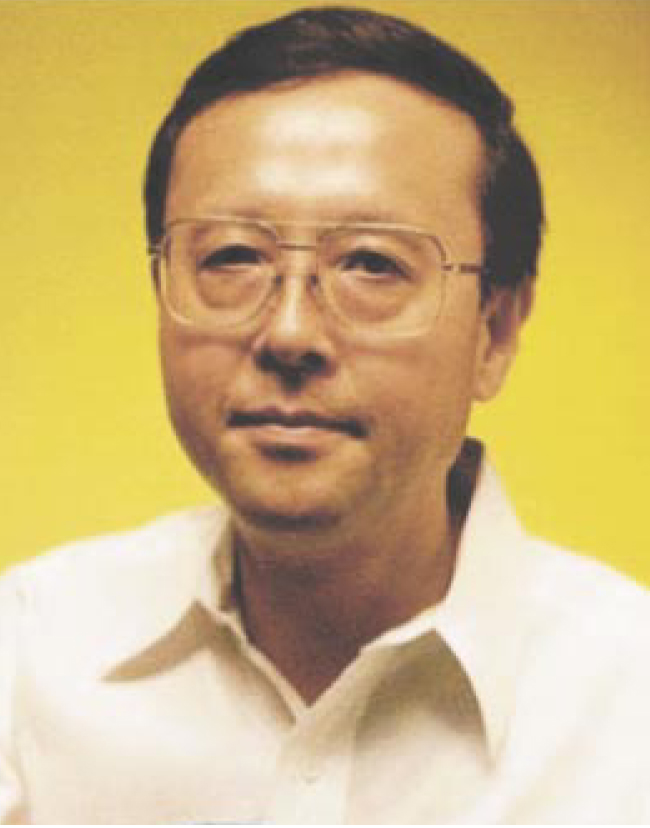Toyoichi Tanaka
DOI: 10.1063/1.1359719
Toyoichi Tanaka, the Otto and Jane Morningstar Professor of Science at MIT, died on 20 May 2000 in Wellesley, Massachusetts, while playing tennis.
Toyo was born in Nagaoka, Niigata Prefecture, in northwestern Japan, on 4 January 1946. His father was a professor of applied chemistry and founder of the department of environmental technology at Saitama University in Urawa, Japan. In 1968, 1970, and 1972, respectively, Toyo received BS, MS, and DSc degrees in physics from the University of Tokyo, where his thesis adviser was Akiyoshi Wada. The title of Toyo’s doctoral dissertation was “Helix–Coil Transition of Biopolymers.”
In the fall term of 1971, Toyo joined the MIT physics department as a postdoctoral fellow. His initial research involved a brilliant experimental and theoretical investigation of thermally-excited fluctuations in the fiber network of synthetic polymer gels. He soon demonstrated quite conclusively that the fluctuations in the intensity of laser light scattered by the gel provide detailed and accurate information on the elastic properties of the gel fiber network and on the viscous interaction between the network and the entrapped gel liquid.
Members of the MIT physics department, realizing Toyo’s exceptional abilities, brought him to the faculty as assistant professor (1975–79); he served as an associate professor from 1979 to 1982 and became a full professor in 1982. In 1997, he became the inaugural Otto and Jane Morningstar Professor of Science.
In the mid-1970s, Toyo discovered a remarkable phase transition in which synthetic (polyacrylamide) gels could swell or contract by up to 1000 times in volume. He quickly realized both the fundamental physical origin of this transition and its many potential applications. Guided by these insights, he conceived and produced gels that exhibit this radical volume expansion in response to changes in chemistry, temperature, light, or electromagnetic fields. By expanding or contracting in appropriate conditions, these gels can be used for toxic waste removal or as drug delivery systems. Their mechanical properties can be exploited in artificial muscles that respond to light or in shoes that automatically conform to the shape of the wearer’s foot. Toyo obtained many US patents for applications of gels and founded several companies such as GelMed and GelSciences and, more recently, Smart Gels and Buyo-Buyo Inc.
In the 1970s and 1980s, Toyo also applied the method of dynamic light scattering spectroscopy to the study of biomedical phenomena. These phenomena included measurements of the diffusion of protein molecules on the rabbit and human eye lens, diffusion of sickle hemoglobin in red blood cells, and the discovery that cold cataract was the result of binary liquid phase separation in cells of the eye lens.
In the 1990s, Toyo embarked on an ambitious and visionary program of creating “smart gels” that mimic many functions of proteins. The idea was to create gels from a mixture of different monomers (playing the role of amino acids) with the sequences of the monomers designed through a process of “imprinting.” The theoretical foundations of the molecular imprinting in folding polymers were also developed by Toyo and his coworkers at MIT. The imprinted gels can selectively respond to specific target molecules and carry out catalytic or other enzymatic functions. His initial results, which confirmed that imprinted gels respond much better than their random counterparts to target molecules, point the way for future research.
These discoveries brought international recognition. In 1985, Toyo was awarded the Nishina Memorial Prize, the most prestigious physics prize in Japan. Recognized for the excellence of his physics research, he received other major prizes, such as the 1986 Award of the Polymer Society of Japan, the 1994 Inoue Prize for Science, and the 1997 Toray Prize for Science and Technology. His research also affected the broader interests of society, gaining him public recognition. In 1993, he won the Vinci d’Excellence Award and, in 1996, he won both the R&D 100 Award and the first Discover Magazine’s Editor’s Choice Award for emerging technology.
Toyo was a versatile, brilliant lecturer and teacher of physics, highly appreciated by his students. Thanks to his remarkable artistic gifts, he brought to his lectures vivid and beautiful hand drawings and unforgettable experimental demonstrations. Senior faculty made it a special point to attend research lectures, masterpieces of elegant exposition, in which he presented his most recent discoveries.
Toyo came from a culture dedicated to scientific excellence, in which recognition was based on merit and accomplishment, but also in which modesty was regarded as a virtue. As his accomplishments and fame grew, he remained modest, showing cordiality and friendship to his colleagues and interest in and respect for his students.
His interests were broad. He learned to speak French and Russian, and he bought a piano and learned to play it. Another interest Toyo had, which he shared with his wife Tomoko, was to form a cultural bridge between Japan and the US; Toyo served as president of the Japan Association of Greater Boston. He and his wife also were both active in the Japanese American community.
Toyo’s exceptional intellect and his vivacity enriched our scientific community. The sudden passing of our beloved and admired colleague leaves us with a deep and continuing sense of loss.


More about the Authors
George B. Benedek. Massachusetts Institute of Technology, Cambridge, Massachusetts, US .
Mehran Kardar. Massachusetts Institute of Technology, Cambridge, Massachusetts, US .
J. David Litster. Massachusetts Institute of Technology, Cambridge, Massachusetts, US .
